32 Types of Safes to Keep Your Valuables Secure
Author: Rick Worst | Editor: Omar Alonso
Review & Research: Jen Worst & Chris Miller
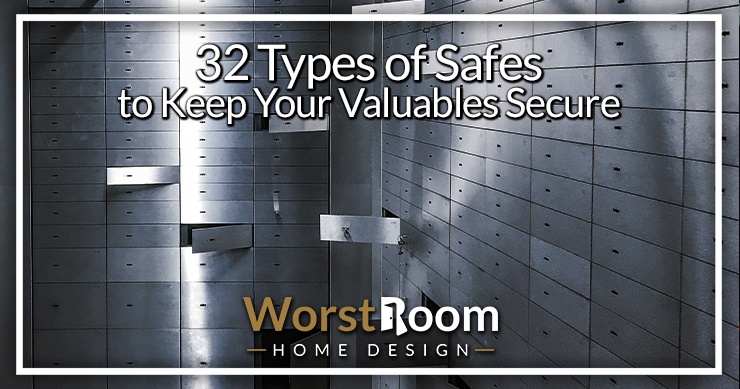
The sole purpose of having safes is to protect your valuably prized possessions and prevent losing them. Safes are the ideal way to store anything with critical information or high value that needs the utmost protection or safety. There are several different types of safes you can opt for.
Whether you like to go old school and choose combination safes or like the hi-tech feel, they all have their own safety features and protection levels. Each also have their own pros and cons we'll go over.
In this article we'll tell you all you need to know the different kinds of safes available and how each can protect your valuables in their own unique ways.
6 Types of Safes by Build Style
Before we dive into the different types of safes built for each specific kinds of items they're designed to secure, I want to show you the formats they come in. This way you can already start to narrow down your selection by where you'll install the safe in your home or business.
Shelf Safes
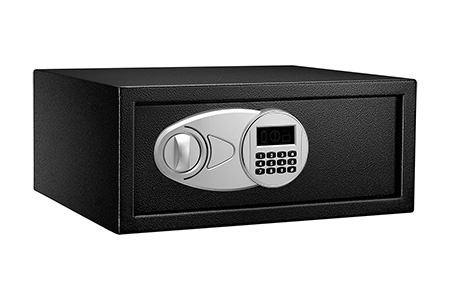
These are the basic safes to keep your essential documents, files, deeds, and other items safe at home or the workplace. The contents can be anything that might be of crucial importance to you and need to be kept secure.
These safe types tend to be smaller and will either open from the front or the top. They can have neat features like fingerprint access, but still, in general, they can be picked up and taken if you don't chain them to something immovable or bolt them down.
People will place them on a shelf in a closet, or if small enough in a desk drawer, etc. They're not really meant to keep items from being stolen so much as safe from fire, water, or from children.
Such safes are known not to be as secure as others might be, but these are fireproof and resistant to heat. In any unfortunate case of housefires, you can rest assured that the contents in your safe will remain secured and unaffected by the heat or the fire.
For a safe to be labeled "Fire Resistant," in general it must have at least 60 minutes of burning time and remain unaffected. If the safe begins to show signs of wear and tear, melting, chipping, or cracking open before the 60-minute mark, it does not qualify as “Fireproof.”
Some fireproof safe types also have a 60-minute burning time at 1700 °F and even two hours at 1850 °F, which is impressive as many safes can only tolerate 1500 °F for an hour. You can learn about all the various fire ratings here .Therefore, based on your preference and need, you can choose to spend a hefty amount if you live in a fire-prone area.
Wall Safes
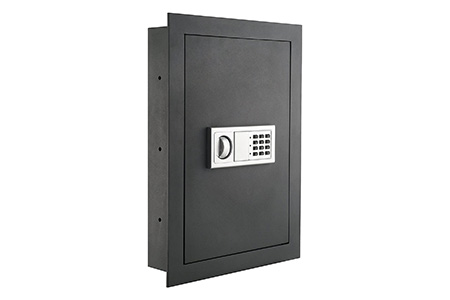
To secure your valuables, wall safes are used in several places, homes, offices, or businesses. It is one of the common safes as it is easily concealed by placing it inside the wall. This way, there won't be any visibility of your safes. You can also opt to cover the safe door by placing a painting or a shelf in front of it.
Typically made of reinforced steel, it is tough to break through or have any surface damage. Since thieves usually tend to run away carrying the safe with them, there is no viable way to do that with these as they are fixated on the wall by being bolted down.
These types of safes come in varying shapes and sizes for you to accommodate your belongings adequately. You can rest assured knowing no damage can be done to the safe or the contents of it if you get the excellent kind and bolt them perfectly on your wall.
Jewelry Safes
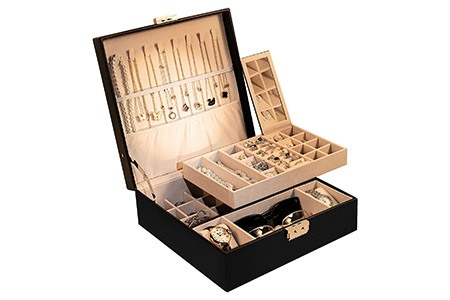
There are so many different options of jewelry safes to choose from. Although these may seem very pretty and fragile, they are anything but! Even the safe itself looks like an ornamental decor piece at times.
Jewelry safes have been around for a long time and are used for different purposes. They come in varying access, such as pin codes, passcodes, scanners, and manual lock attachments.
These insides are usually fitted with an overall satin and velvet layer to prevent any rough surface from coming in contact with the jewelry. You can install them on the wall or closet effortlessly, but it is essential to ensure you leave enough space to open the door.
This is because most safes come with removable drawers so you can arrange and organize your jewelry accordingly.
As your collection grows over the years, it is wise to have enough detachable parts, drawers, or compartments in your safe. It allows you to safely keep all your precious items in one place without opting for other security systems.
Typically, these kinds of safes are made from heavy-duty steel with thick walls that do not respond much to being dented or hammered.
Floor Safes
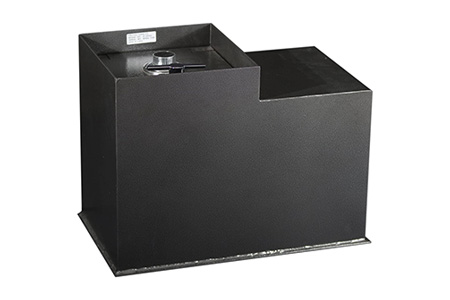
Even though these are convenient in terms of concealing, the accessibility of these can be somewhat straining and painful over time. Available in many different sizes, these are fitted into a chamber dug deep in your floor and installed correctly.
You can also increase the safety of these floor safes by placing a table or any other heavy and bulky object on top. Almost always made of thick reinforced steel, placing it underneath the floor can prove to be quite the challenge at times. However, once done right, you can mellow out without worrying about the safe.
Even though its concealment may seem highly appealing, there are some downsides. During natural disasters such as earthquakes and tornadoes, the embedded safe can severely deform. Since most people opt to embed it underneath the concrete floor, it can, over time, retain some damage such as dents, rust, and corrosions.
However, by preparing the surrounding floor area with reinforcements and taking proper preventative measures, you can prevent any damage to these types of safes and use them for much longer without any issue.
Standalone Safes
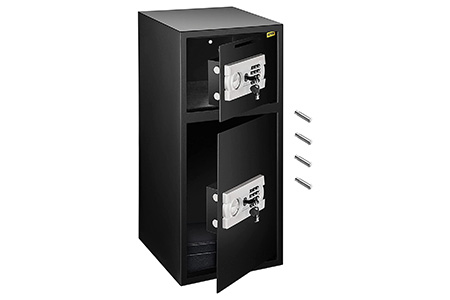
These are always so ridiculously heavy that they could leave their marks on the floor at some point, causing dents or indentations. It's highly recommended not to relocate or move these around from one place to another as their weight could be enough of a factor.
The difficulty concealing or hiding them away is nearly impossible due to their bulky size. Extremely resistant to bullets, fires, and chainsaws, these are known to be about as safe as a bank's vault, except they are much smaller in scale.
Made of industrial strength heavy-duty reinforced steel, breaking through these is nearly impossible and requires to be accessible only via scanning or by using the keys to it.
Typically, these come with a few locking system options such as combination, pin, or even passwords. All of these types of door locks are sufficient and have their pros and cons, so choose based on your preference. You can choose any two as a backup situation or one form of locking method to ensure the security of the contents.
Hi-Tech Safes
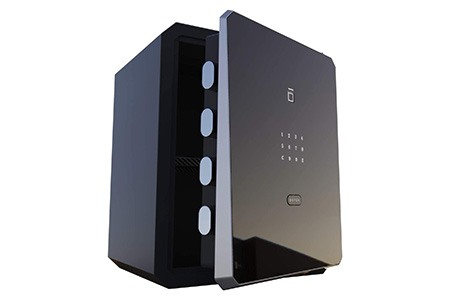
These hi-tech items are more like a gadget than a safe. These safe types use certain parts of your body, such as fingerprints, voice commands, retina scans, and facial unlock features, for accessibility.
Although not all this safe comes bearing each of these options to unlock, there might be more than just one way to open your hi-tech security systems, such as fingerprint and pin combo or retina scan and password.
Developments made to safes have significantly improved over the past two decades and are highly reliable at this point. Most hi-tech biometric safes allow a maximum of two different finger scans to access the contents of the safe. This gives you the freedom of going keyless, so you don't have to worry about losing your key.
As many benefits as there are to having a hi-tech safe, there also are certain disadvantages to it. You could have to face false scans on your safe where your finger or retina scan will be denied as the scanner might not be able to function or scan your finger correctly due to a dirty finger or dirt on the scanner.
11 Types of Safes by Items Held
Knowing the build format of a safe doesn't tell you much. Most security safes are built around the items they're meant to secure, and will have features inside of them mean to help facilitate the organization of them. Some will have shelves, slots, compartments, stands, and more in them.
Security Safes
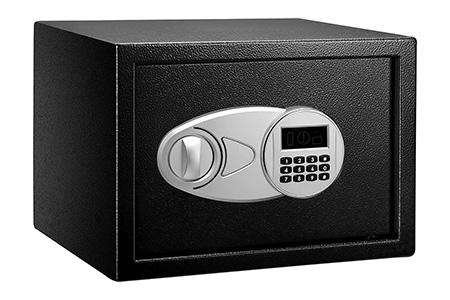
When people think of a safe, this is usually what they picture in their minds. These can be large, medium, or small enough to sit on a shelf. These are meant to keep the items within from being stolen and destroyed. Think about precious metals, passports, USB drives with important documents, birth certificates, and so forth.
Sometimes you'll see these safes mounted inside of a wall, even behind a painting that swings out on hinges. Sometimes they're small enough to slide under a bed or on a closet shelf and be bolted down. The idea is to deter the entire safe from being stolen, since thieves typically are in a rush to get in and out.
These will be fire-proof, water-proof, drop resistant, and tamper proof. They typically open from the front with a key or a combination lock design. They'll usually have one or two shelves inside and that's about it (on the smaller ones anyways).
Gun Safes
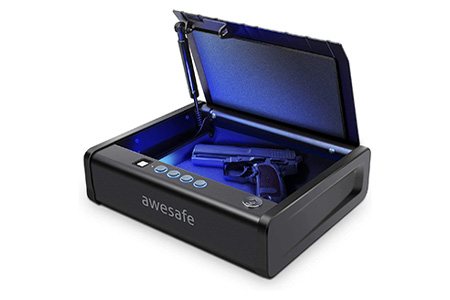
Many people that own a firearm own many and many times they're very valuable, even having been passed down through generations. It is of the utmost importance to make sure that nobody can access and handle these items without permission for safety reasons.
It is also important that any thieves be completely deterred from even trying to take these items because they can cause future problems for the community and they can cause quite a financial loss when taken.
Gun safes come in all kinds of sizes but most are of the floor-to-ceiling shape (but not quite that tall). They stand tall in order to hold rifles and shotguns as well as pistols. They're always lined on the inside with cushiony fabric to protect the items as well as ways to lean them against the wall without them tipping over into one another.
These types of safes will nearly always have shelving as well to store ammo, magazines, and other accessories. The manufacturers have perfected the design and the ultimate decision for you to make is how much room you need inside and where you'll place it inside your home.
They are heavy enough to not need bolting down, and for the same reason should not be placed in an upstairs room if you're unable to support the weight from below with extra jack posts. Pictured above are the kind you would keep beside your bed for quick access and safe storage.
Media Safes
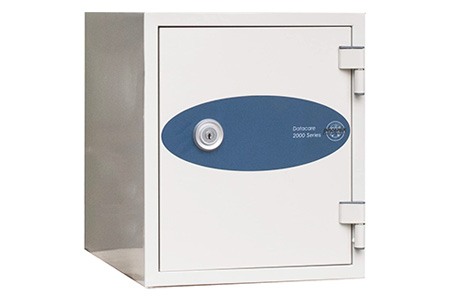
A media safe isn't meant to keep items secure from theft, but from fire and water. They're typically very small, just big enough to house USB drives and some important documents. Others may be large enough to hold a tablet or laptop.
Some of the documents people will store in these are identity cards, savings bonds, passports, birth certificates, certificates of deposit, and anything with sentimental value. They're of the size and weight that you can easily carry it around in case of emergency as well.
Portable Safes
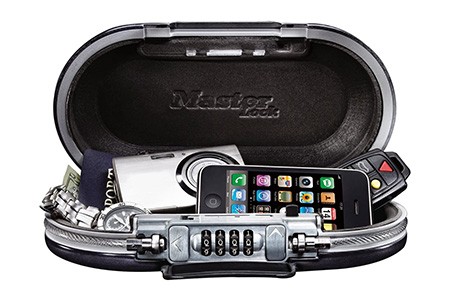
A portable safe is very much like a media safe, though are even lighter to carry around. They're designed for the purpose of carrying them with you. Can a person steal the entire safe, take it with them, and then have hours to work at opening them? Sure. But deterrence is always a good thing.
Some will have compartment trays to help you separate all of your items inside them for organizational purposes, as well as a flat surface beneath the tray to keep documents unbent.
Items to consider placing in a portable safe when traveling are keys, jewelry, passports, work documents, ID's, cash, and medication. It will help deter staff in hotels from being nosy and other similar concerns, which will help keep your mind at ease.
Gun Concealment Safes
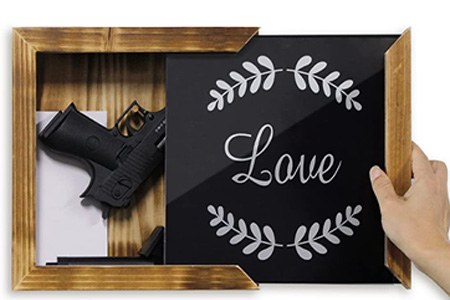
You may not want a giant safe for your firearms, because one of the main reasons to have one is to readily have access to it in case someone breaks in your home with the intent of doing you harm. There are all kinds of safes meant to hide one of these items in plain site, such as coffee tables, bed headboards, and more.
It's almost always in the shape and functionality of furniture because of the size of the items they need to conceal, and because they need to store these items in areas that you're always at, such as sitting on the couch or lying in the bed.
What's neat is that visitors won't realize you have these items stashed around your home, but you still need to lock these types of safes with children and visitors around so nobody finds them and causes an accident.
Safe Boxes
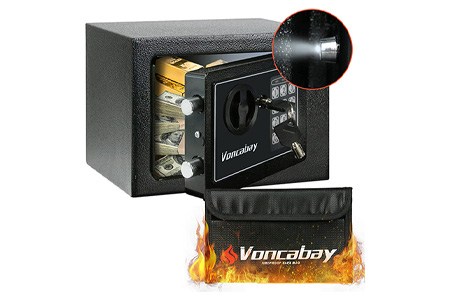
Safe Boxes are like security safes but much smaller, less well built, and more easily hidden. They're small enough that you won't fit much more than an expensive camera and lenses and some documents in there. But perhaps that's all you need to keep the kids away from your stuff.
These usually can be mounted to the floor or inside a wall, but their size makes them interesting targets if noticed. I would think of these more like depository safes below, just with the fire proof and water proof features added in.
They may or may not keep items from being stolen, but they'll keep them safe from thieves and pesky children messing with things they shouldn't. It is in my opinion that this "middle ground" option shouldn't be chosen, and that if you feel you need one of these you should upgrade to a better option.
Depository Safes
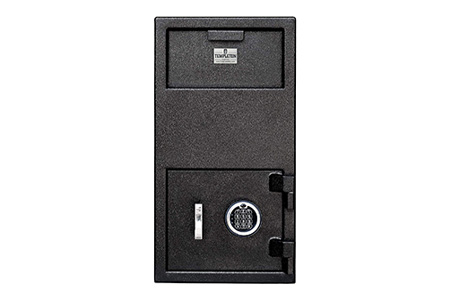
This is kind of like a safety deposit box at a bank but in your home. They're like media safes and portable safes in size but even smaller, often meant to simply hold cash, change, and precious metals. It's almost easier to treat these safe types as secure piggy banks to help you help others save money so they can't access it. Make sure you get one that is water and fire proof.
File Safes
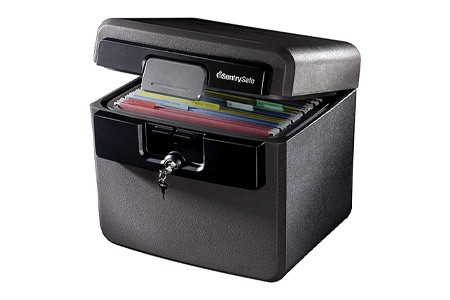
A file safe is like a file drawer or file box, but with the added safety of being fire resistant and water resistant, as well as having a lock on them. They have ridges built in them to allow you to use hanging folders to organize your documents inside.
They're typically not more wide than a sheet of paper turned on its side, and no taller than paper oriented in that direction either. They're specifically meant to store standard sized paper documents and nothing more.
Consider one of these to keep your loan information, tax documents, birth certificates, and other similar documents safe and secure from the elements.
Drawer Safes
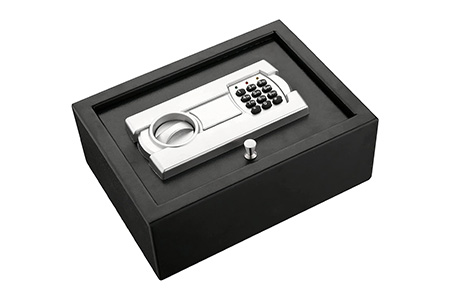
A drawer safe is another deterrence option that simply keeps people out of your business. They slide in a computer desk drawer, office desk drawer, or any other drawer types, or even in a cash register. The typical lock option is simply a key.
While these different types of safes can be lifted out and carried away, most people who find it won't do so. It'll be your friends and family who will get the message that whatever is in here is private and not for prying eyes. You can find these safe types with fire and water resistance, too.
Wall Safes
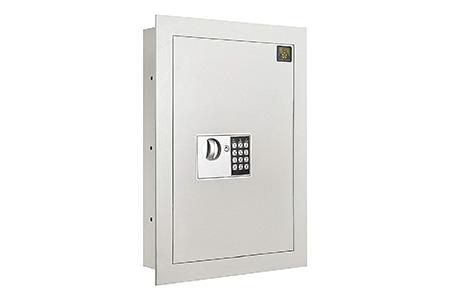
A wall safe is a much more sturdy and larger version of the safe box. These are designed to be mounted within an interior wall, which can then be hidden from view by hanging a painting or other artwork in front of it.
Obviously these won't be very deep as they can't protrude out of the other side of the wall either. They're good to store your typical items we've discussed above, but nothing of substantial size past a few pistols or expensive camera, depending on how many shelves there are inside.
Hidden-in-Plain-Sight Safes
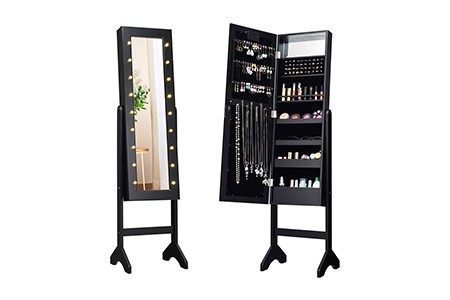
These types of safes are possibly the smartest of all, except they won't feature all of the options like a lock, fire and water resistance, etc. They're meant to store items like cash right in plain view as a diversion tactic. In fact, sometimes these are called diversion safes.
If a thief enters your house, you could have a fairly obvious safe to distract their attention, meanwhile your money is stored inside of a hollowed out book on the shelf, or inside of a whip cream canister on top of the fridge, or a fake peanut butter jar in the cupboard.
That's the idea with these safes. They're so obvious that nobody would expect them. Other ideas include fake and hollow rocks in the flower bed, inside of the back refrigerator, jewelry stored inside of a mirror, flat cash stored inside of a magazine inside the bathroom, and so forth.
6 Types of Safes by Lock Design
One of the bigger questions is what type of lock do you want on your safe? Do you want something electronic which may break but is convenient? Do you want a combination lock which is really secure but takes a while to open? Do you want a key lock but you might lose the key? Let's look at them all.
Key Lock
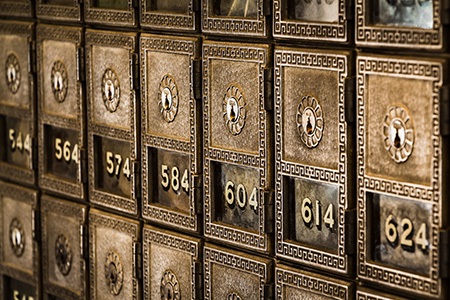
A key lock is classic and simple. We all know how they work. You simply need to have the key on hand to open the safe. That's the benefit. There's no electronic passcodes to remember and no dials to turn. Either you have the key or you don't.
And that's the problem with these too, because who hasn't ever lost a key? A safe key is easy to lose when you don't use them very frequently. You can forget where you put them, a kid can move it, or you can misplace it while cleaning. That's the only pitfall with the key lock on a safe.
Electronic Lock
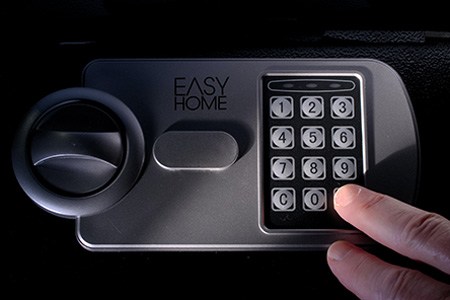
An electronic lock typically means having a keypad on it where you punch in 3 or 4 numbers in the right order to open the safe. You can re-program the key code to any number you already have memorized, but you don't want to match it to a number anyone else has access to.
What's nice is you can tell a friend or family member the code so they can gain entry, and then later reprogram it so it's secure again. The downfall to these is that if the electronics ever stop working, you'll need help fixing it to get into the safe again.
Combination Lock
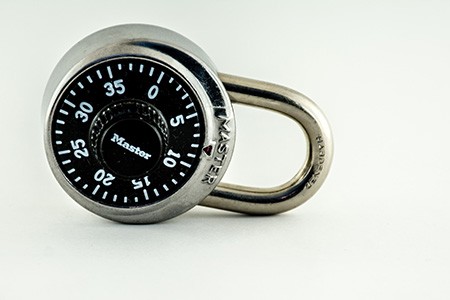
A combination lock are the dials you have to spin, matching the numbers to the vertical position in the right order with the right number of turns of the dial in the right direction. Does that sound like a pain? It is, but it's very secure.
One mistake and you have to reset the tumblers and try again from the beginning. The benefit is these don't require keys that can be lost and very rarely will they ever break. You can't change the code either, though, so you'll need to memorize a random set of numbers.
Biometric Lock
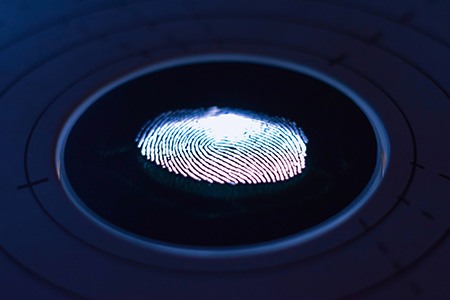
A biometric lock allows you to scan many of your fingerprints so you can use any of them to gain entry into the safe. It's that simple and it's that fast, until it isn't. I actually have one of these types of safes that was gifted to me.
It asks you to scan several fingers on both hands several times each so that the failure rate is lower. The problem is the failure rate is still high enough to be annoying, and the reason to have this type of lock is so you can get into it very quickly. So the purpose can be defeated at times, and if this happens at the worst times it can mean something very dire, indeed.
Card Entry
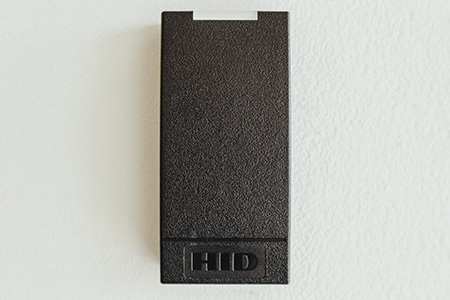
Much like using normal types of keys for your safe lock, these function very similarly except they use a key card. This is like you would experience in a fancy hotel where you need to swipe the card through a slot to open a door.
The problem again, in my experience, is the electronics will undoubtedly fail on you one day, locking you out of your own safe. These are good for businesses where you can pass out cards to employees and if you never get one back, you can simply reprogram the code and the remaining cards, with the understanding that you'll one day need to have someone come fix the electronics.
Dual Lock (Key & Other Type)
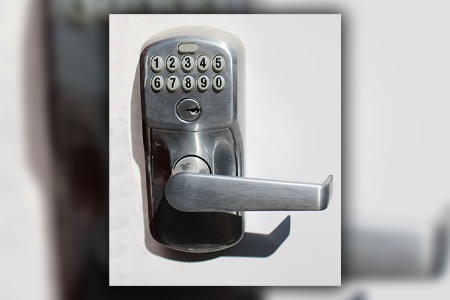
Take any of the above types of locks on safes and add a key to it as well. That means you can turn a combination lock, use someone else's removed finger (gross), or even know their keypad code, and you still can't get inside the safe without also having the key.
This is extra secure from conniving people who don't want to brute force their way into your safe. It's also an extra pain every time you want to get into the safe, but it's a pain that's worth going through, in my opinion.
9 Features Found in or on Security Safes
Before you think you've made your decision, make sure you're aware of all of the features mentioned below and see if they type you settled on has it or if a safe option from another brand has them.
Shelves & Stands
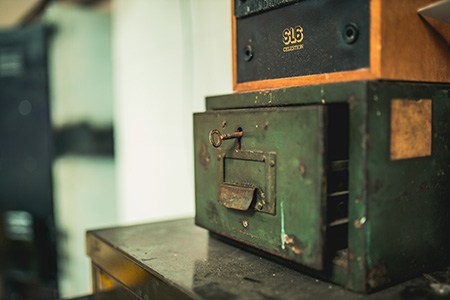
A sizable safe without shelves or stands in them to help you make the most of the space and get organized does little good. Consider the size of the items you want to store in the safe, and whether or not the shelves are removable or rearrangeable.
Waterproof
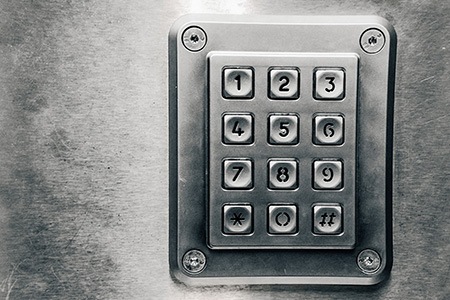
What should be a standard feature but sadly isn't in all types of safes is being waterproof. This doesn't mean you intend on throwing your safe in the swimming pool, but you may have a leaking water pipe in your home one day or your fire sprinklers could go off. Keep your documents and electronics safe from this event.
Fire Resistance
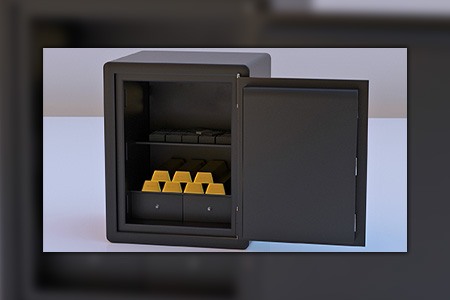
A fire resistant safe will still get hot on the inside if left in the middle of a fire, but having this feature will buy you enough time to either remove the safe or your items from within in time to keep them from being damaged. You'd be surprised at what may survive a full house fire, too.
Impact Resistance
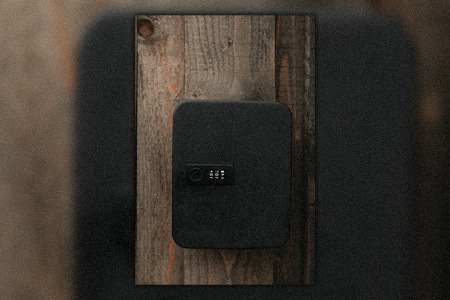
For portable and moveable safes, having them be impact resistant can help keep the items inside safe somewhat, but what it does do is help ensure that one drop won't cause you to need to go out and spend money on a brand new safe. They should be able to be dropped some without effecting their ability to lock up securely.
Humidity & Temperature Control
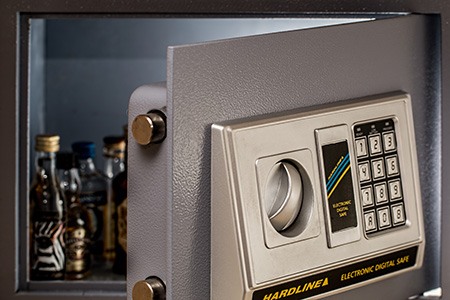
Some safes hold items that need to be held at the right humidity, such as a gun safe. While you can always add humidity control devices inside the safe, as well as a humidity measurement device, the nicest safes will have temperature and humidity controls built in.
Bolt Capability
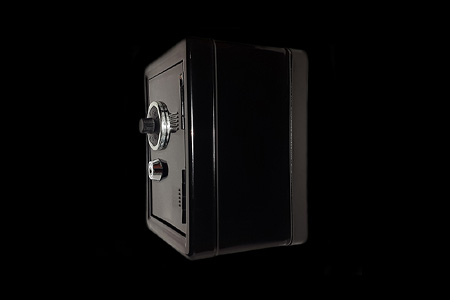
Think in advance if you want to be able to bolt your safe down to wood or concrete. Bolting one down in the attic, to the studs inside your walls, to your closet floor, or to the foundation of your garage may be just what you need to secure your goods. Different kinds of safes offer this ability, even small ones, so if you desire it make sure you look for the feature.
Realize you can't bolt an extremely large and heavy safe in just any types of rooms in your home. I'm specifically referring to upstairs rooms where you don't have the opportunity to reinforce the flooring from beneath like you can with a basement or crawlspace. Please take that into consideration.
Interior Lighting
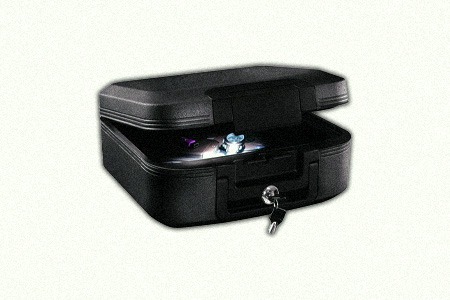
A big and deep enough safe needs to have lights in them. Sure, you can add your own battery powered, push button lights, but opening the door and having lights come on automatically is a convenient feature you may be happy you have.
False Bottoms
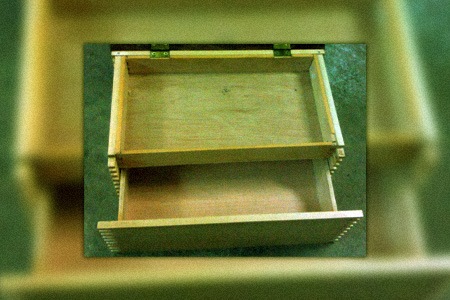
Not every safe will keep people out of it for sure. Some people are persistent. A safe can feature a false bottom so that in the event a thief does get into your safe, they won't realize some of your valuables aren't visible as they hurriedly grab the obvious items on the shelves.
Drop Slot
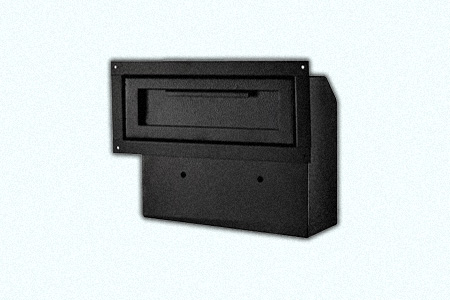
Some safes are meant to store cash and checks temporarily just for the day. There are some safe types that feature a drop slot where you can slide in money, a check, an envelope, and more, which will then securely slide down into the main compartment which can't be accessed from the slot.
Types of Safes to Hide & Protect Your Coveted Belongings
This article was intended to provide a guideline on what kind of safe to purchase based on what you need to hide or cover up for. This article discusses the benefits and contradictions of all the types of safe to help you choose what you need.
Although each of the different types of safes are special and functional in their own way, some are known to perform better than others while ensuring the security of everything.



